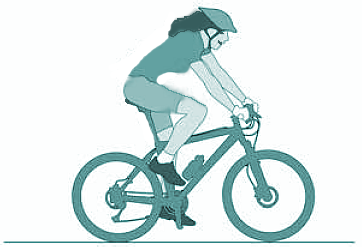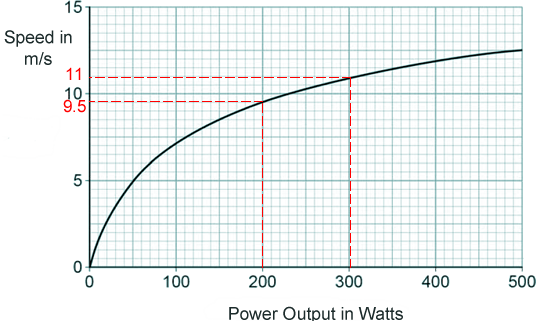GCSE Questions: Energy Changes Q5. The graphic shows a cyclist riding along a straight, level road at a constant speed.
Complete these sentences: As the cyclist rides along the road, the chemical [2 marks] The graph below shows how the speed changes as the power output of the cyclist changes.
(a)
[1 mark]
[3 marks] (b) Calculate the percentage increase in speed of the cyclist when the power output changes from 200 W to 300 W.
The change in velocity is from 9.5 m/s to 11 m/s - an increase of 1.5 m/s Percentage increase = increase/original value x 100% = 1.5/9.5 x 100% = 16 % [2 marks] (c) The maximum speed this cyclist can travel on a level road is 14 m/s. How does cycling uphill affect the maximum speed of this cyclist? Explain your answer. When cycling uphill the maximum speed will be lower [3 marks] [Total 11 marks] |
Follow me...
|







